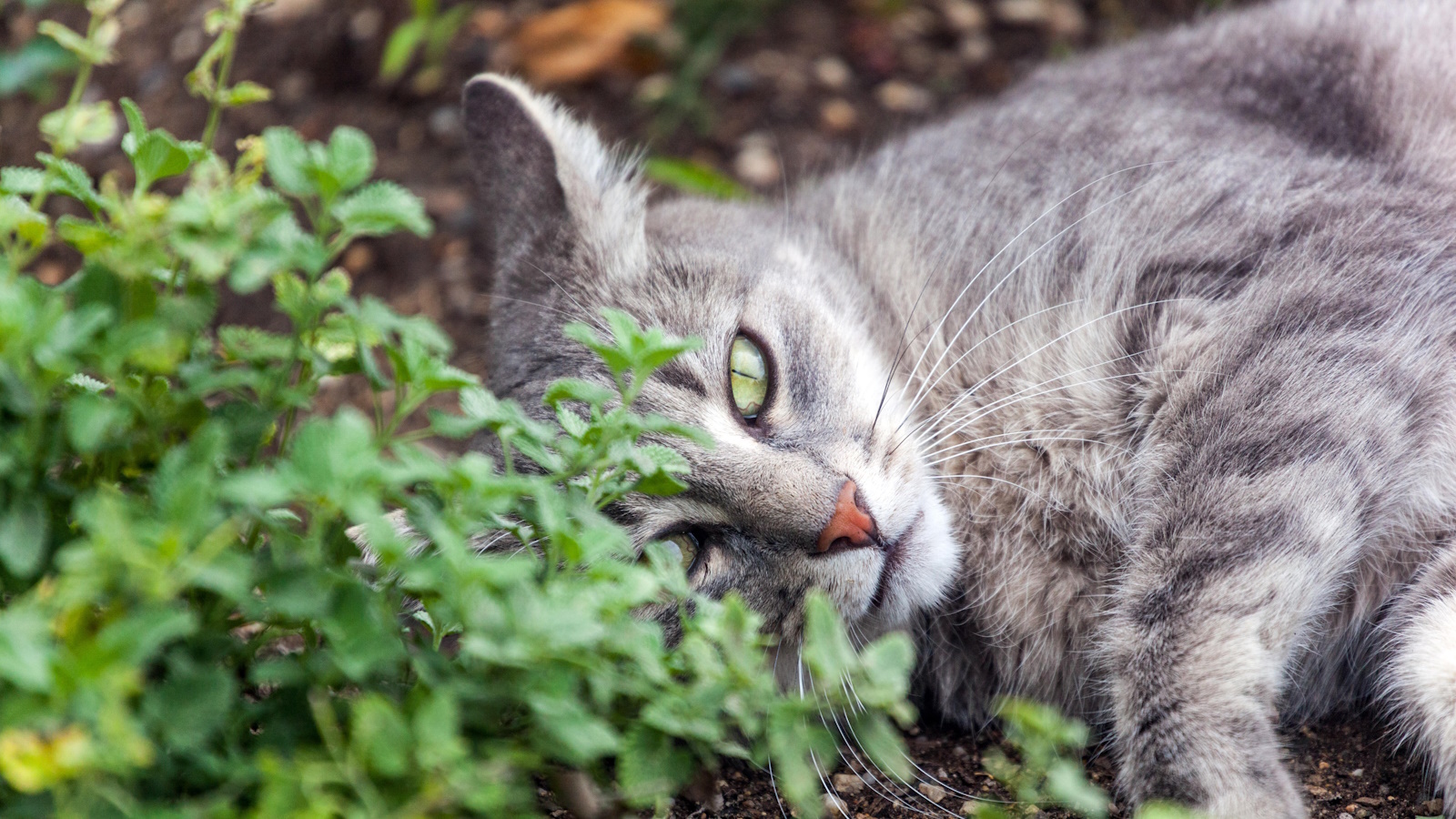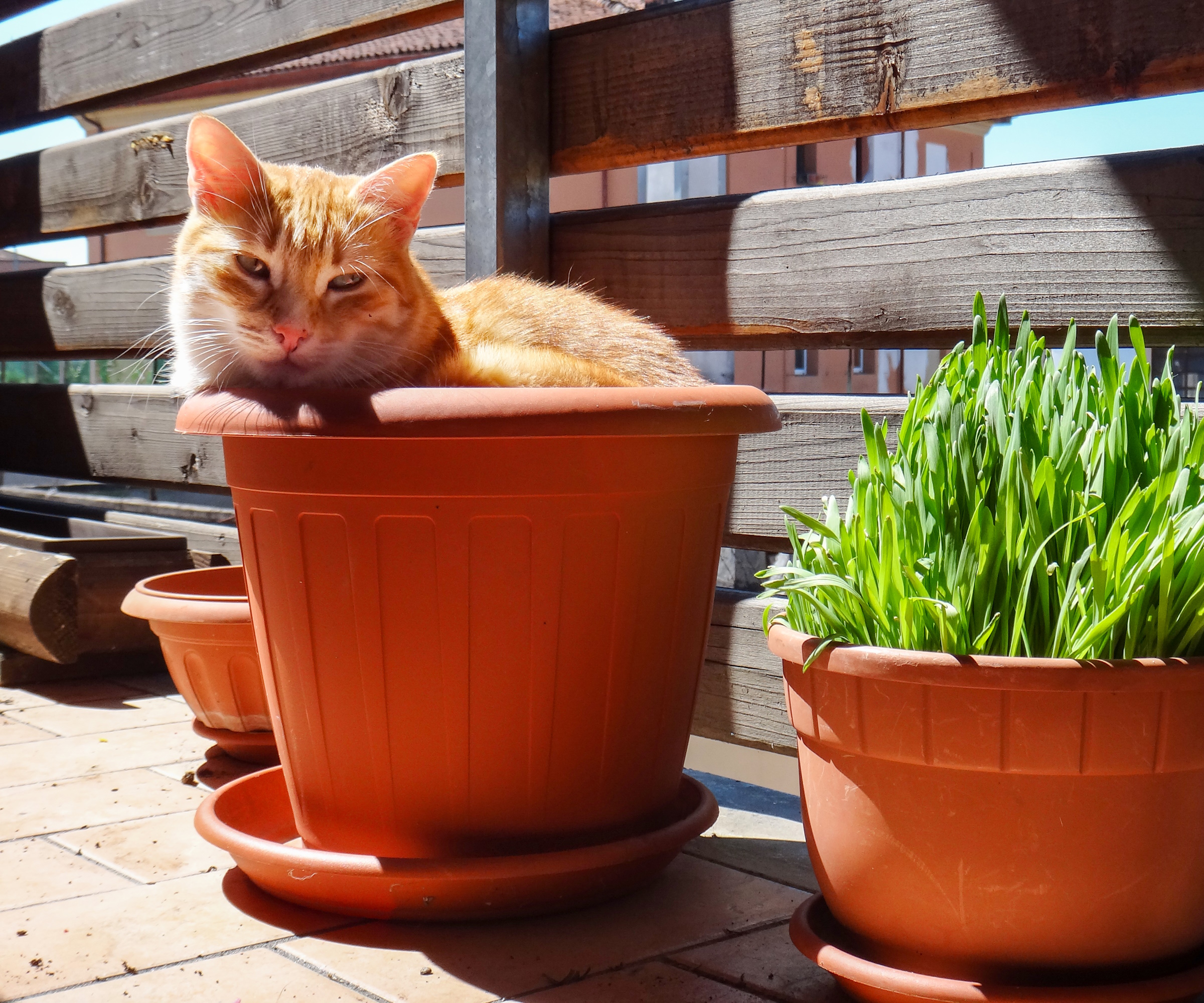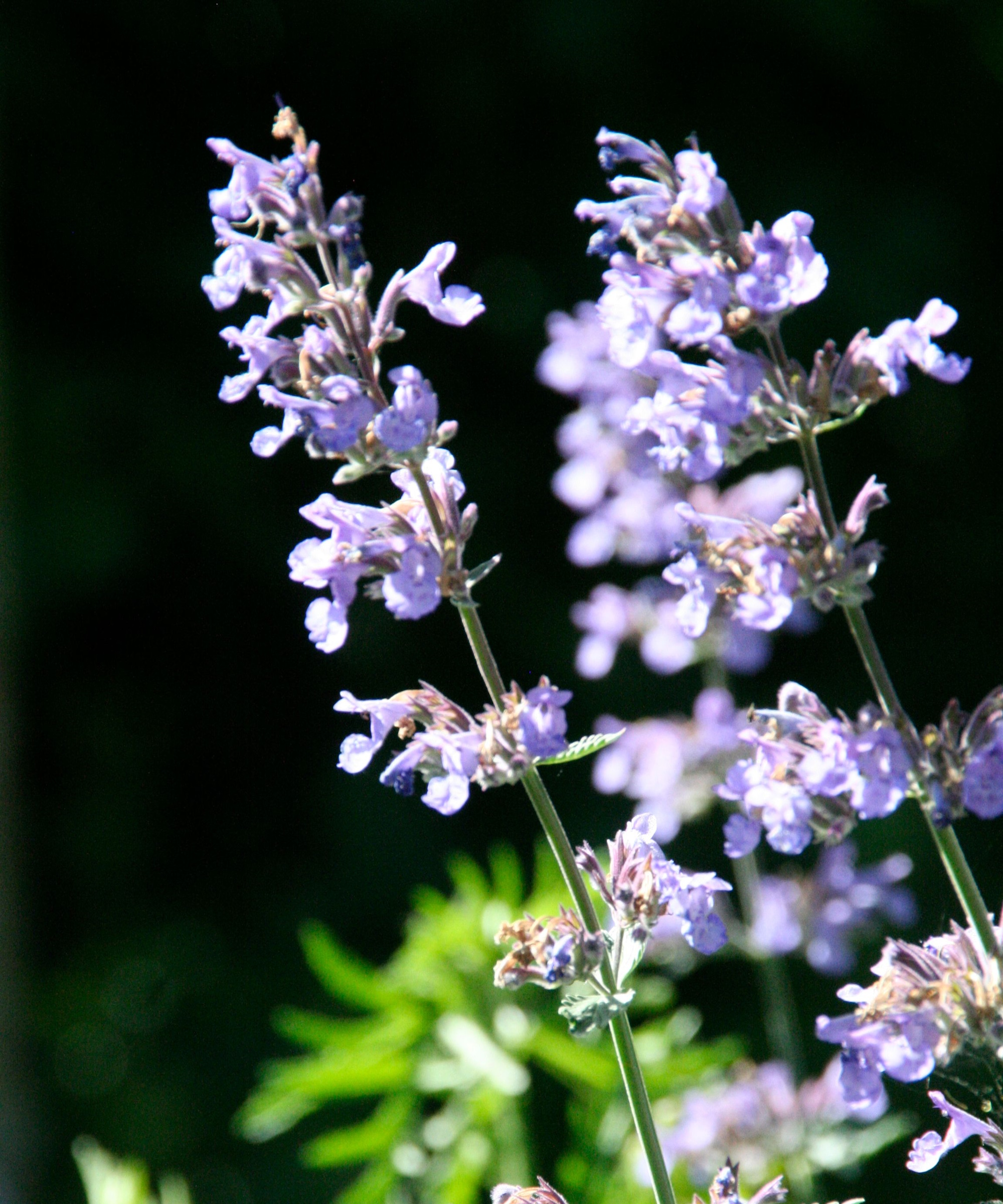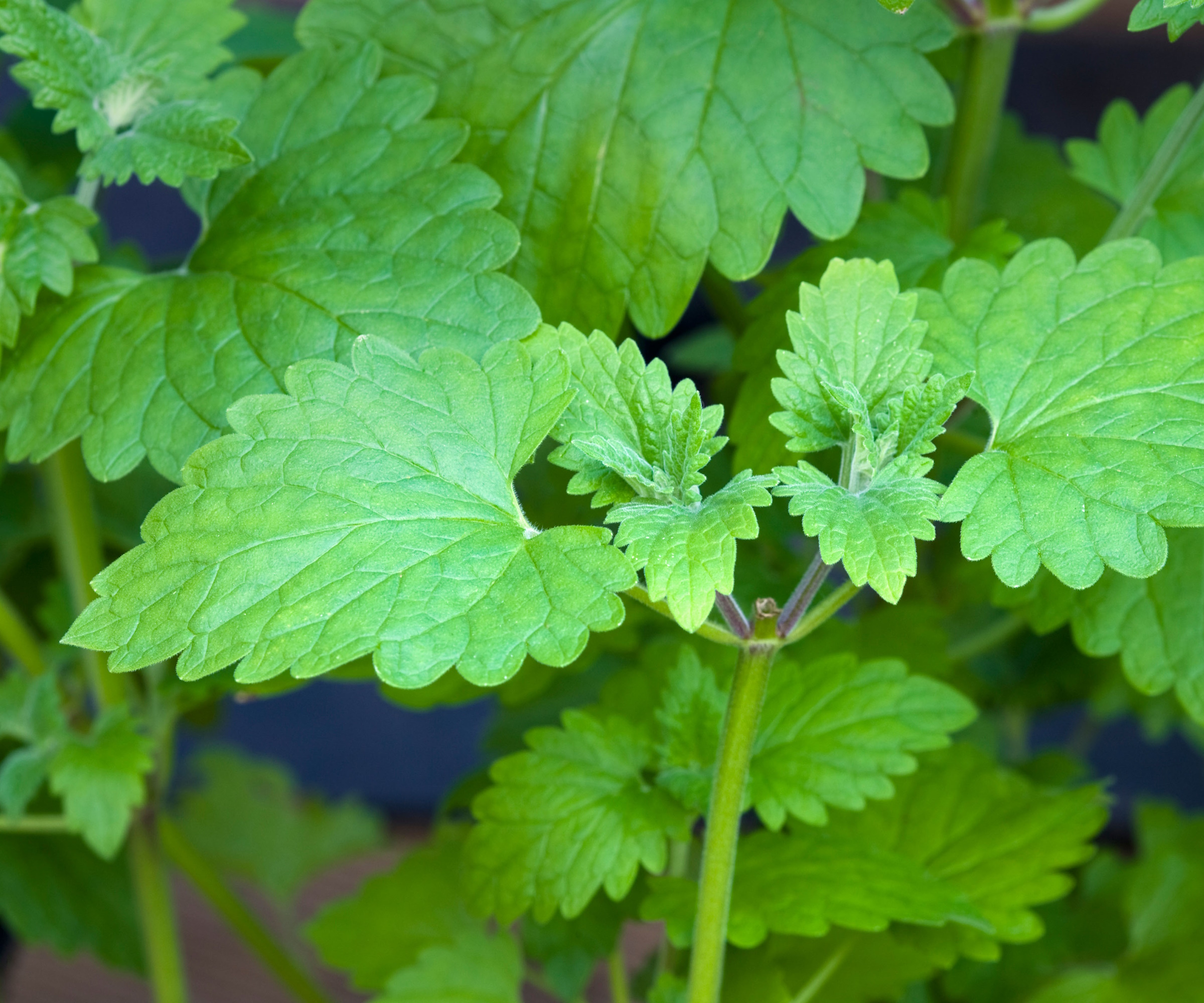How to grow catnip – expert advice for this underrated, aromatic plant that tolerates the cold
Catnip plants can be so much more for your yard than just a tasty feline treat


Catnip, otherwise known as Nepeta cataria, is a fragrant perennial herb belonging to the mint family. Its aromatic grey-green leaves emit a subtle scent that stimulates responses in cats, and in springtime it blossoms into small vertical flowers.
Whether you're seeking to grow catnip for your feline friends or to add an elegant sprig of florals to your garden's flower bed ideas, it's important to brush up on the basics of catnip care and know how cultivate the ideal environment for its growth.
We talked to gardening experts to learn all about what catnip needs to thrive indoors or out, so your plants will grow as healthily as can be.
How To Grow Catnip
Catnip is a much-loved perennial that grows naturally in temperate regions across the world, from North America to New Zealand and beyond. Whether it's an addition in your yard for its stunning blooms, to treat your pets, or for its natural ability to deter pests and deer, catnip plants are hardy and can survive through most seasons.
Growing habits of catnip

Growing best in USDA plant hardiness zones 3-9 and preferring temperatures between 55°F and 85°F, catnip plants are a frost hardy perennial, suitable for most yards. With their high cold and drought tolerance, you can naturally find catnip growing in all kinds of places from roadsides to fields, to sunny windowsills and abandoned waste grounds.
Catnip plants are also notable for the shape and hue of their leaves. Andrew Bunting, vice president of horticulture at the Pennsylvania Horticultural Society, says, 'Catnip are among a host of ornamental perennials that are noted for their mounding grey-green foliage which becomes covered in an abundance of spikes of flowers in May-June.'
Historically, before modern pet owners discovered how much cats love catnip as a treat, the plant was used as a medicine to help remedy pains and cramps in the stomach, or to assist infants with colic and sleep.
'Today it's more important if you're growing catnip to think about how to fend off neighboring cats,' says Andrew. 'Because cats will be attracted to the plants, you may need some sort of protection around your catnip to stop cats from rolling over and crushing the plant.'

Andrew Bunting is Vice President of Horticulture and leads the utilization of planting and design to promote environmentally sound gardening practices at PHS. Prior to arriving at PHS, Andrew worked at the Chicago Botanic Garden, Chanticleer Garden, and the Scott Arboretum for a tenure of 27 years, and has received many commendations for his work. In 2015, Andrew published his first book, “The Plant Lover’s Guide to Magnolias.”
Care guide for catnip

Soil: As a drought-tolerant plant, it's vital to ensure that the soil your catnip lives in isn't waterlogged or overly damp. As Andrew says: 'Well-drained soil is essential for the health and growth of a catnip plant, indoors or outdoors.'
Catnip plants aren't overly picky with their soil aside from dampness, thriving in a wide range of soil types from sandy soils to clays in pH's from 5.0 to 8.0. If you're unsure what the soil pH is like in your area, we recommend investing in a soil meter like this 4-in-1 soil moisture meter from Amazon which will tell you all kinds of useful information about pH, water retention and light levels.
Light: Catnip plants are the happiest when they're lit under at least six hours of direct sunlight per day, whether that's outside in an area without shade or on a sunny windowsill. Though, be mindful not to splash water on your catnip's leaves and then leave it under the sun and this can cause scorching.
If you're concerned about your indoor catnip plants receiving inadequate levels of light during the day, perhaps consider investing in a grow light like the yadoker LED growing light from Amazon to supplement its needs.
Watering: As much as catnip plants are drought-tolerant they still require watering, especially when they are first planted. 'Water your catnip plant regularly, but allow the soil to dry slightly between waterings to ensure the plant isn't subjecting to overwatering, leading to root rot,' says Andrew.
You can tell that your catnip needs watering when the top inch of soil is dry which, on an average day in its USDA hardiness zone, equates to around weekly.
If your catnip plant lives outdoors and you don't live in an area where it barely ever rains, you may not even need to water your catnip at all.
If your catnip lives indoors though, it's recommended to plant it up in a pot including drain holes and to sit it on a drip tray like the Austin planter 5 plant saucers from Walmart to allow excess fluid to drain.
Fertilizing: Catnip isn't a plant that particularly requires fertilizer. In fact, doing so is more likely to harm your plant and alter how it tastes to cats.
Chris Link, co-founder of Plant Addicts, says, 'If you wish to fertilize your catnip, fertilize sparingly with a balanced 10-10-10 fertilizer or compost during the growing season. Catnip really doesn't need heavy feeding, even when it's first being planted.'
Pruning: Pruning is very important for the continued growth of your catnip plants, and should be done regularly using quality pruning tools like the Leize flower scissors from Amazon.
'By mid-summer, catnip sometimes gets straggly,' says Andrew. 'It can be rejuvenated by cutting the plant back to ground. This will provide enough time for a new mound of foliage to emerge for the remainder of the growing season.'
Toxicity: Catnip isn't toxic but it's important not to feed too much of it to a cat as doing so can lead to numerous health problems. To protect your plant and neighborhood cats from consuming too much catnip, you can occasionally cover your crops over using a net protector like the ones in the Evoio 4 pack of garden plant netting bags from Amazon. Placing ground black pepper around the perimeter of your plant can help to deter cats as well as they don't like the scent. You can mix the pepper with hot water to create a spray version of this DIY repellent.

Chris Link is the co-founder of PlantAddicts.com and has been in the gardening industry for over 10 years. He enjoys helping people to be successful gardeners by helping them find the perfect plants for their gardens and caring for their plants.
How to grow catnip from seed or starter plants

Planting up catnip either as a starter plant or from seeds is a relatively straightforward process, best started after the last frost where you live.
Chris breaks down how to approach planting up your catnip crops in three steps:
- Choose the right location: 'Catnip grows best in full sun, but it can tolerate partial shade. Select a spot with well-drained soil, as catnip dislikes sitting in waterlogged areas.
- Prepare the soil: Loosen the soil and mix in compost to improve drainage and fertility. If planting in containers, choose pots with drainage holes and fill them with a quality potting soil (we like the Micracle-Gro indoor potting mix from Amazon for container pots grown indoors or outdoors).
- Planting the catnip: For seeds, sow directly into the soil after the last frost, covering lightly with soil. For starter plants, dig a hole twice the size of the root ball, place the plant inside, and gently firm the soil around it.'
Water your catnip plant regularly, with a minimum of an inch of water per week once newly planted.
FAQs
Is catnip the same as cat mint?
Catnip and cat mint are both related to mint - they are from the same genus but they are different plants. Catnip has a slightly weedier more sprawling appearance. The blooms tend not to be as showy as those of cat mint, which also flowers for longer.
If you're looking to create a yard filled with drought-tolerant plants like catnip, you can elevate the entire look of your greenery using some of these drought-tolerant landscaping ideas.
Sign up to the Homes & Gardens newsletter
Design expertise in your inbox – from inspiring decorating ideas and beautiful celebrity homes to practical gardening advice and shopping round-ups.

Ciéra is a writer and regional laureate with particular passions for art, design, philosophy and poetry. As well as contributing to Livingetc, she's an Editorial Assistant for Design Anthology, and a contributing writer for Homes & Gardens and Apartment Therapy. Previous commendations of hers include being Highly Commended by The Royal Society of Literature and receiving a prestigious MA Magazine Journalism scholarship to City University, London.
You must confirm your public display name before commenting
Please logout and then login again, you will then be prompted to enter your display name.
-
 Drew Barrymore's striped sofa is her most elegant design to date – it oozes East Hampton elegance in time for summer 2025 (and is under $384)
Drew Barrymore's striped sofa is her most elegant design to date – it oozes East Hampton elegance in time for summer 2025 (and is under $384)This subtly striped linen sofa anchors any living room while feeling light and casual – it looks so much more expensive than its price tag
By Megan Slack
-
 Bryce Dallas Howard's bedroom is the most creative, social space in her entire home – she uses 'conversational seating' to create a multifunctional 'salon'
Bryce Dallas Howard's bedroom is the most creative, social space in her entire home – she uses 'conversational seating' to create a multifunctional 'salon'The actress's bedroom doubles as a home office thanks to its clever layout and furnishings, proving that this area is much more than a sleep space
By Hannah Ziegler